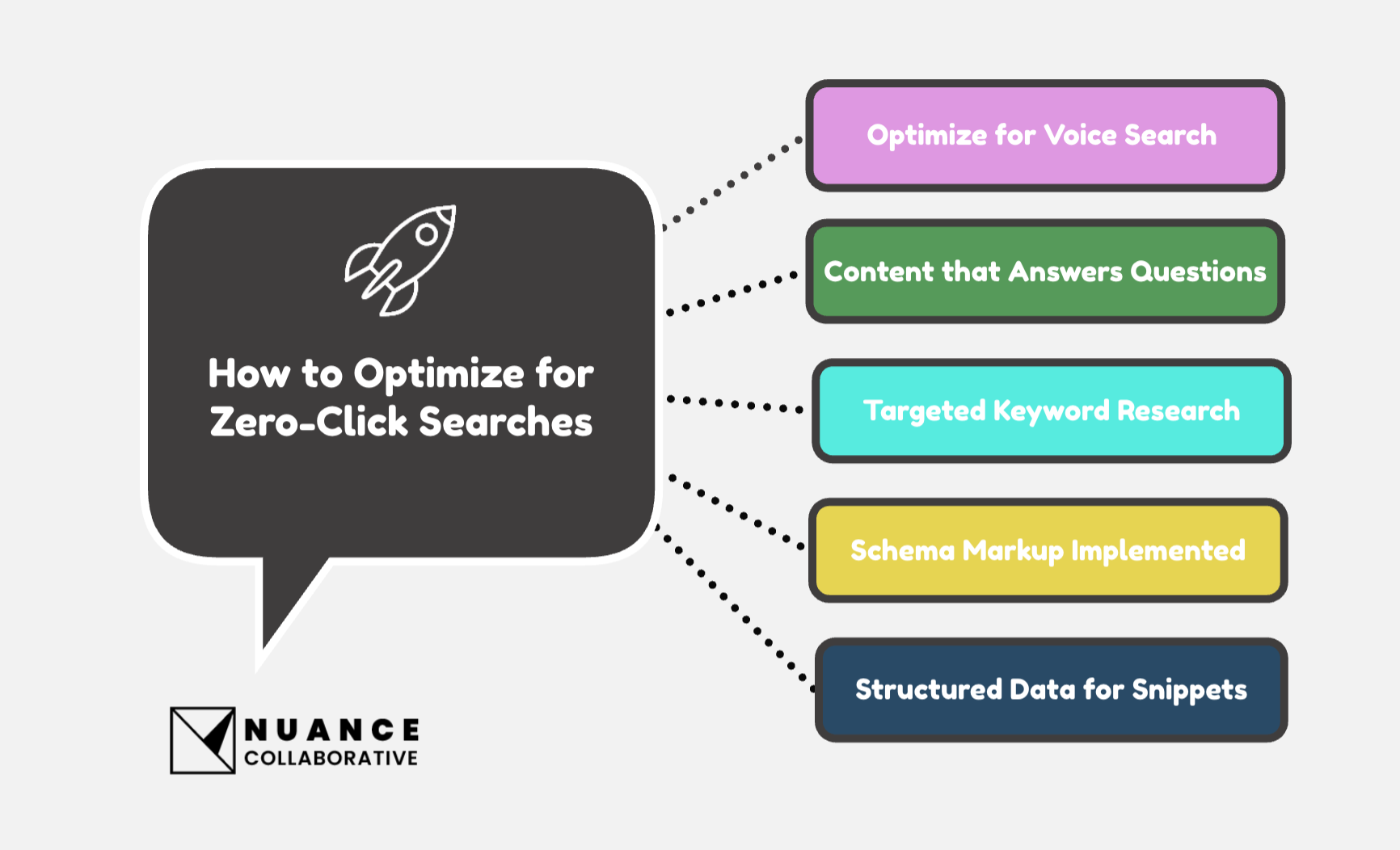Zero-Click Search Optimization 🔍
How to Optimize for Zero-Click Search 🔍
With the rise of voice search, featured snippets, and knowledge panels, more search queries are being answered directly within the search engine results pages (SERPs), leading to a phenomenon known as zero-click searches.
In 2024, optimizing for zero-click searches is crucial for organic digital marketers who seek to maintain visibility and capture organic traffic. The work involves targeting high-intent keywords, optimizing content for featured snippets, and leveraging structured data markup to enhance search engine understanding of website content.
By providing concise, relevant answers to user queries, businesses can position themselves as authoritative sources of information and drive organic traffic even in the absence of traditional click-throughs to their websites.
But What Exactly is a Zero-Click Search?
Let's back-up a bit...what causes a zero click search...
(1) 'A zero-click search happens when a user performs a search but doesn’t click on a link that takes them outside of Google. In fact, as many as 57% of users on mobile and 53% on desktop don’t click an organic or paid result, according to a newly released Semrush study of more than 600,000 searches.'
Let's back-up a bit...
(1) 'A zero-click search happens when a user performs a search but doesn’t click on a link that takes them outside of Google. In fact, as many as 57% of users on mobile and 53% on desktop don’t click an organic or paid result, according to a newly released Semrush study of more than 600,000 searches.'
Optimize for Voice Search
In order to optimize for voice search, focus on long-tail keywords that mimic natural language queries. Create concise, conversational content that directly answers user questions and addresses their needs. Optimize your website for local search by including location-based keywords and ensuring your business information is accurate and up-to-date. Use structured data markup to provide context and relevancy to search engines. Finally, prioritize mobile optimization and fast-loading pages to enhance the user experience. By tailoring your SEO strategy to accommodate voice search trends, you can improve your website's visibility and attract more organic traffic from voice-activated devices.
Create Content that Answers Questions
To create content that answers questions in search engines, start by understanding your target audience's common queries and pain points, and develop comprehensive and informative content that directly addresses these questions, providing clear and concise answers. Structure your content with headings, lists, and bullet points to improve readability and accessibility. Incorporate relevant keywords naturally throughout your content to optimize for search engine visibility. Additionally, consider using FAQ sections, how-to guides, and tutorials to provide valuable solutions to user inquiries. By focusing on user intent and delivering valuable answers, you can enhance your content's visibility and attract more organic traffic from search engines.
Conduct Targeted Keyword Research
Performing targeted keyword research, start by brainstorming relevant topics and terms related to your business, products, or services. Utilize keyword research tools like Google Keyword Planner, SEMrush, or Ahrefs to identify high-volume keywords with low competition. Analyze competitor websites and industry trends to uncover additional gaps, or other keyword opportunities. Prioritize long-tail keywords that are specific to your niche and reflect user intent. Consider factors such as search volume, keyword difficulty, and relevance to your target audience. Finally, create a keyword strategy that aligns with your content goals and incorporates a mix of short-tail and long-tail keywords to optimize for search engine visibility and audience engagement.
Ensure Schema Markup is Implemented
To implement Schema Markup on a website, first, identify relevant schema types for your content, such as Article, Product, or LocalBusiness. Then, use a schema markup generator tool to create the appropriate markup code. Insert the generated schema markup into the HTML code of your web pages, ensuring it is placed in relevant sections. Validate the markup using tools like Google's Structured Data Testing Tool. Monitor performance in search engine results and update the schema markup as needed. By adding structured data to your website, you provide search engines with additional context, improving the visibility and relevance of your content in search results, especially important for e-commerce or catalog websites.
Regularly Check Structured Data is Present & Updated
Much as the steps when initial Schema Markup is implemented, you can use schema markup generator tools to create accurate and comprehensive markup code, and should be practice when for example; adding new products or services to a website. Place structured data within appropriate HTML elements and ensure it follows schema.org guidelines. Validate the markup using tools like Google's Structured Data Testing Tool to check for errors or warnings. Monitor search engine performance and user engagement metrics to assess the effectiveness of your structured data implementation. Regularly update and refine structured data to reflect changes in content, business information, or search engine algorithms, ensuring ongoing optimization for improved visibility and relevance in search results.
The Benefits of Zero-Click Search Optimization
Mastering zero-click search optimization, businesses can unlock a range of benefits, including:
- Increased Visibility: Appearing in zero-click search features increases your brand's visibility and exposure in the SERPs, even if users don't click through to your website immediately.
- Enhanced Credibility: Being featured in featured snippets, knowledge panels, and other zero-click search features establishes your brand as a trusted authority and source of information within your industry.
- Improved User Experience: Zero-click search features provide users with immediate answers to their queries, enhancing the overall search experience and reducing friction in the information-seeking process.

















